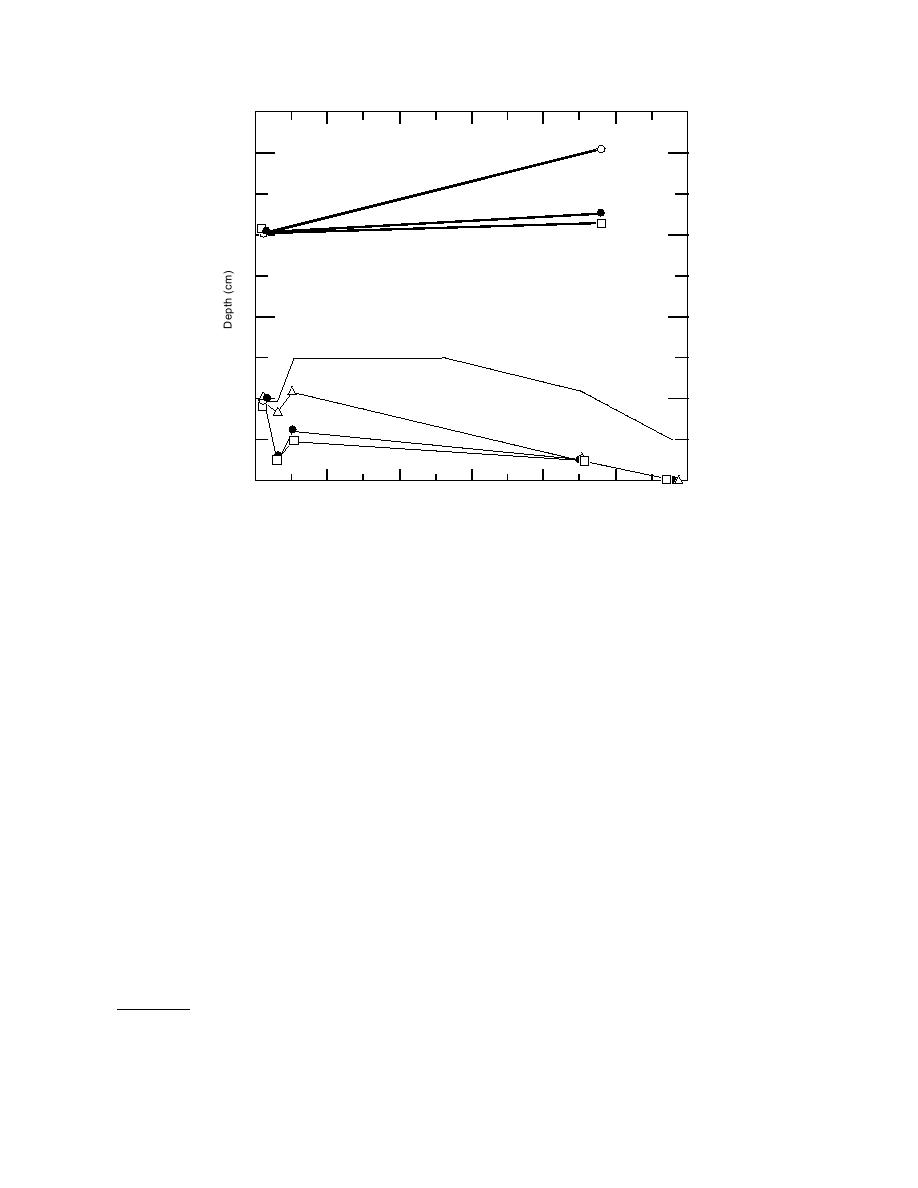
40
Ambient Ice,
Bark
ICE
THICKNESS
Sand
30
Leaves
20
Ambient
Snow
Bark
10
Sand
SNOW
DEPTH
Leaves
0
17 Feb `94
27
9 Mar
19
29
8 Apr
18
Figure 2. Snow depth and ice thickness in test plots and control on ice-covered pond.
near-infrared portion of the spectrum (4001000
were not effective once the surface was covered
nm).
with meltwater. Leaves and gravel were heavier
The albedo measurements were made on sepa-
than water and stayed on the ice surface even
rate test plots from those described above. No
when there was meltwater on the surface of
special preparations were made to the snow be-
the ice. We also found that wetting the organic
fore application of the materials. The dusted ar-
materials had the advantage of hastening melt-
eas were 60 60 cm and all the measurements
ing in the early stages of the tests, and pre-
were made 30 cm from the ground. The test
vented the material from being blown around
areas had 1000 cm3 of material spread on their
by the wind during and immediately after appli-
cation.
surfaces (except the coal dust which had only
had 750 cm3 of material). The albedo was mea-
sured with a hemispherical cosine collector. This
Albedo measurements
In March of 1994 we made albedo measure-
ments of snow and dusted snow on the frozen
area. Photographs of the test plots are shown in
pond. Also, spectral reflectance* measurements
Figure 3. The albedo measurements are shown in
were made of samples of snow and of the pure
Figure 4.
dusting materials (hay, leaves, bark, sand, and coal
Figure 3a shows that the snow in the control
dust). These measurements allowed us to identify
area is coarse grained and dirty, an observation
what materials might be most effective for reduc-
confirmed by a low albedo of 50%. This is a typi-
ing the albedo of a snow or ice surface.
cal value for late winter "corn" snow. The dusting
All of the measurements were made using a
materials decreased the albedo of the snow by
Analytical Spectral Devices field portable radiom-
varying amounts, with hay being the least effec-
eter. The measurements covered the visible and
tive and coal dust being the most effective. Of the
organic materials leaves were the most effective
at reducing the albedo of the surface.
*Spectral reflectance is the ratio of radiation reflected
For measuring the reflectance of the of pure ma-
by the sample to that reflected from a standard (the stan-
terial samples, each material was placed in a sepa-
dard reflects greater than 99% of the solar radiation,
Labsphere 1988).
rate container that was about 7.5 cm in diameter.
3



 Previous Page
Previous Page
